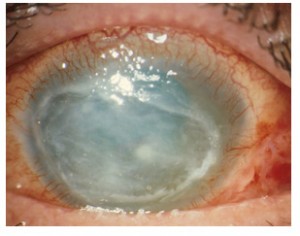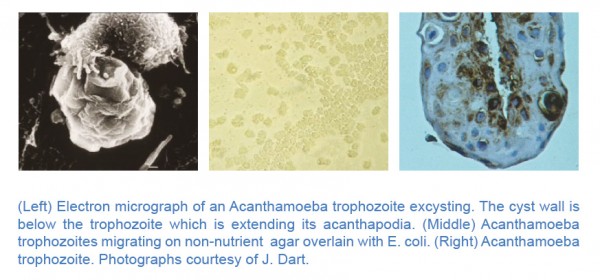A short text prepared by CORDIS to present the project

Following the European Commission's approval of the Summary for the ODAK project (see interview with Dr Asero), the dissemination of project activities was initiated.
We offer the short summary (Results in Brief) prepared by the scientific editors of CORDIS, which carries out information and dissemination activities on behalf of the European Commission on EU-funded projects and their results.
The "Results in Brief" will be published in 6 languages; we offer the original English text together with the Italian version.
PHMB eye drops for treating Acanthamoeba ocular infections
A European study is testing a novel drug formulation for the treatment of a debilitating eye infection. It is also raising awareness about the risks of wearing contact lenses and the importance of prompt diagnosis of eye infections.
Acanthamoeba keratitis (AK) is a rare parasitic infectious disease of the eye affecting mainly individuals who wear disposable contact lenses. If not treated promptly, it can lead to visual impairment and even blindness. As a result, it is of primary importance to develop and establish efficacious treatment for AK.
With this in mind, the EU-funded 'Orphan drug for Acanthamoeba keratitis (http://www.odak-project.eu/ (ODAK)) project set out to test the efficacy of the drug Polihexanide (PHMB). PHMB has been designated as an orphan drug in the EU for the treatment of AK. During ODAK it will undergo non-clinical as well as Phase I/Phase III clinical evaluation. Apart from testing the quality, safety and efficacy of PHMB, ODAK partners will also provide recommendations for the clinical practice and management of AK.

Retrospective evaluation of the clinical outcomes of AK patients treated with unlicensed drugs indicated that 96 % of patients were using contact lenses, and that PHMB was the most frequently used medication. The efficacy of PHMB established it as a promising candidate for obtaining an official AK treatment licence. ODAK partners therefore set out to optimise formulation of the PHMB active ingredient. Different formulations have so far been tested in terms of efficacy and ocular tolerance in pre-clinical models.
At the same time, the consortium is engaging in dissemination activities to raise awareness about the disease, its diagnosis and treatment, and preventative measures. The project has also been promoted on social media, providing information on its activities and progress.
By improving the current empirical treatment of AK with PHMB, ODAK hopes to increase drug bioavailability at the ocular surface and hence its therapeutic index. The envisioned eye drops formulation is expected to also minimise side-effects as well as the need for hospitalisation and surgery.
Key words: Eye infection, contact lenses, Acanthamoeba keratitis, Polyhexanide, PHMB, eye drops
Dr. Carmelo Chines
Direttore responsabile
